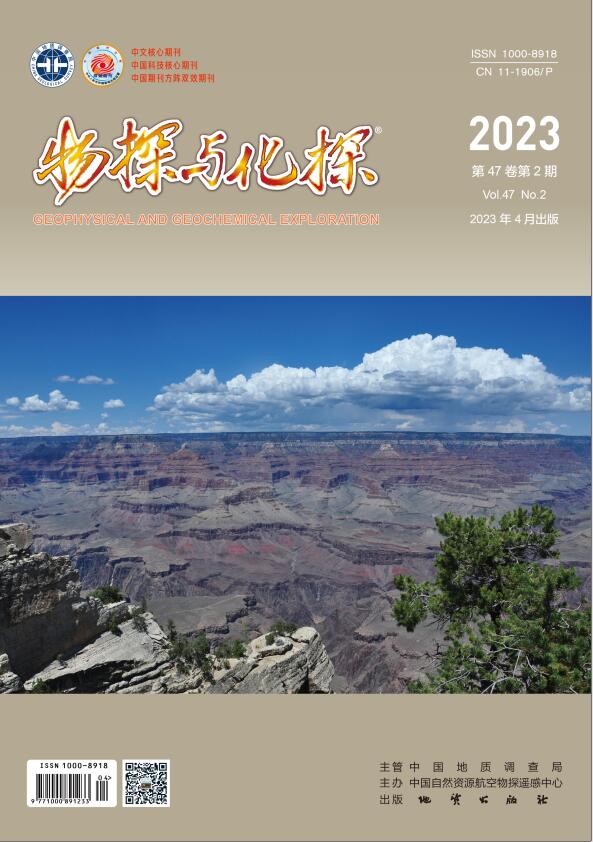| [1] |
Tarantola A. Linearized inversion of seismic reflection data[J]. Geophysical Prospecting, 1984, 32(6):998-1015.
Google Scholar
|
| [2] |
Wu R S, Luo J, Wu B. Seismic envelope inversion and modulation signal model[J]. Geophysics, 2014, 79(3):WA13-WA24.
Google Scholar
|
| [3] |
Bo?mann F, Ma J. Asymmetric chirplet transform for sparse representation of seismic data[J]. Geophysics, 2015, 80(6):WD89-WD100.
Google Scholar
|
| [4] |
Shin C, Cha Y H. Waveform inversion in the Laplace domain[J]. Geophysical Journal International, 2008, 173(3):922-931.
Google Scholar
|
| [5] |
Li Y E, Demanet L. Full-waveform inversion with extrapolated low-frequency data[J]. Geophysics, 2016, 81(6):R339-R348.
Google Scholar
|
| [6] |
Hu W. FWI without low frequency data-beat tone inversion[C]// SEG Technical Program Expanded Abstracts 2014,Society of Exploration Geophysicists, 2014:1116-1120.
Google Scholar
|
| [7] |
刘张聚, 童思友, 方云峰, 等. 基于时域加权的拉普拉斯—频率域弹性波全波形反演[J]. 石油地球物理勘探, 2021, 56(2):302-312.
Google Scholar
|
| [8] |
Liu Z J, Tong S Y, Fang Y F, el at. Full waveform inversion of elastic wave in Laplace frequency domain based on time domain weighting[J] Oil Geophysical Prospecting, 2021, 56(2):302-312.
Google Scholar
|
| [9] |
Jin Y, Hu W, Wu X, et al. Learn low wavenumber information in FWI via deep inception based convolutional networks[C]// 2018 SEG International Exposition and Annual Meeting,OnePetro, 2018.
Google Scholar
|
| [10] |
Sun H, Demanet L. Low frequency extrapolation with deep learning[C]// SEG Technical Program Expanded Abstracts 2018,Society of Exploration Geophysicists, 2018:2011-2015.
Google Scholar
|
| [11] |
Ovcharenko O, Kazei V, Kalita M, et al. Deep learning for low-frequency extrapolation from multioffset seismic data[J]. Geophysics, 2019, 84(6):R989-R1001.
Google Scholar
|
| [12] |
Ovcharenko O, Kazei V, Peter D, et al. Transfer learning for low frequency extrapolation from shot gathers for FWI applications[C]// 81st EAGE Conference and Exhibition 2019,European Association of Geoscientists & Engineers, 2019(1):1-5.
Google Scholar
|
| [13] |
Sun H, Demanet L. Deep learning for low frequency extrapolation of multicomponent data in elastic full waveform inversion[J]. IEEE Transactions on Geoscience and Remote Sensing, 2022, 60:1-11.
Google Scholar
|
| [14] |
Fang J, Zhou H, Elita Li Y, et al. Data-driven low-frequency signal recovery using deep-learning predictions in full-waveform inversion[J]. Geophysics, 2020, 85(6):A37-A43.
Google Scholar
|
| [15] |
Hu W, Jin Y, Wu X, et al. Progressive transfer learning for low-frequency data prediction in full waveform inversion[J]. Geophysics, 2021, 86(4):1-82.
Google Scholar
|
| [16] |
Mousavi A, Baraniuk R G. Learning to invert:Signal recovery via deep convolutional networks[C]// 2017 IEEE International Conference on Acoustics,Speech and Signal Processing (ICASSP),IEEE, 2017:2272-2276.
Google Scholar
|
| [17] |
Ronneberger O, Fischer P, Brox T. U-net:Convolutional networks for biomedical image segmentation[C]// International Conference on Medical Image Computing and Computer-Assisted Intervention,Springer,Cham, 2015:234-241.
Google Scholar
|
| [18] |
Zeiler M D. Adadelta:an adaptive learning rate method[J]. Computer Science, 2012:1-6.
Google Scholar
|
| [19] |
Bunks C, Saleck F M, Zaleski S, et al. Multiscale seismic waveform inversion[J]. Geophysics, 1995, 60(5):1457-1473.
Google Scholar
|






 DownLoad:
DownLoad: